When High Mileage Pays Off
A few years ago, I was at a cars and coffee, walking down a row claimed by a British Car Club. An owner of a super-clean Lotus Evora caught me checking out their car and came over to tell me about it. “Less than 2000 miles,” was the first thing he said. “Nice,” I responded, but the conversation didn’t go much further—I didn’t know what else to say. I appreciate that others enjoy keeping a car factory-fresh, but the allure of keeping miles off a car has always escaped me—instead, it’s always seemed natural that distance covered equates to adventures and memories.
I can’t be the only enthusiast of high-mileage vehicles. After all, Matt Farah’s million-mile Lexus LS400 earned tons of well-deserved media attention. Bill MacEachern’s 800k-mile 1976 Porsche 930 Turbo is a revered feat of automotive endurance. These high-mileage stories, along with a few recent sales, got me thinking: Surely we have data at Hagerty that show which cars are appreciated specifically for their ability to rack up miles. Among those figures, I had a theory that I’d find that some people are willing to pay more for vehicles with extensive history or extremely high mileage. It was time to dig into the numbers and find out.
Rolling through the Numbers
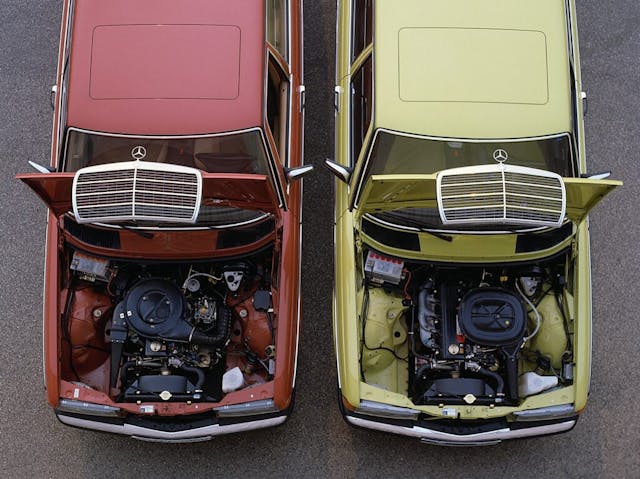
I assembled the hundreds of thousands of auction transactions in our database that have odometer data and set about determining the parameters of my search. 300,000 miles was the benchmark—you’d be surprised how regular 200,000 miles is these days (even my daily driver Toyota is about to roll over 250,000). I also tightened the net to exclude vehicles that no longer had their original engine. High-mileage enthusiasts would care about originality—the pride is in the maintenance and the longevity, after all. That disqualified some impressive survivors, like this 603k-mile 1990 Toyota Pickup, but it did help hone the data set to the cream of the high-mileage crop.
This left just under 150 vehicles sold on online auctions dating back to 2015. A quick caveat: Auction sales are admittedly not a complete view of the market, but they provide data we can see. There’s no question other models, like Cummins-powered Dodge Rams and Power Stroke–equipped Fords are racking up the miles and commanding good money, too—they just tend to transact privately, where mileage and other details are often unavailable.
The 300K+ Club
That filtered the data to our finalists. For anyone who appreciates a long-lived ride, this list is probably not very surprising.
All of the top high-mileage cars come from Japan or Germany—countries with a reputation for overbuilding their vehicles, at least when these particular models were constructed. Mercedes-Benz still offers high-mileage awards, with the million mark as its highest threshold. In fact, Mercedes was so confident in the reliability of its cars that it installed the industry’s first six-digit odometer on the 1971 350SL. It would take nearly 30 years for the rest of the industry to completely forgo the old five-digit odometer.
The only car from a non-German or Japanese manufacturer with three or more sales above 300K miles is the Volvo 1800—not surprising considering one was driven over 3.2 million miles. The model tied two other German cars (the BMW E28 5 Series and Mercedes-Benz W124) and two other Japanese cars (Honda CRX and the third-gen Toyota 4Runner) with three each. The Volvo 240, a favorite of our media team, would have made the list if it weren’t for a few engine replacements.

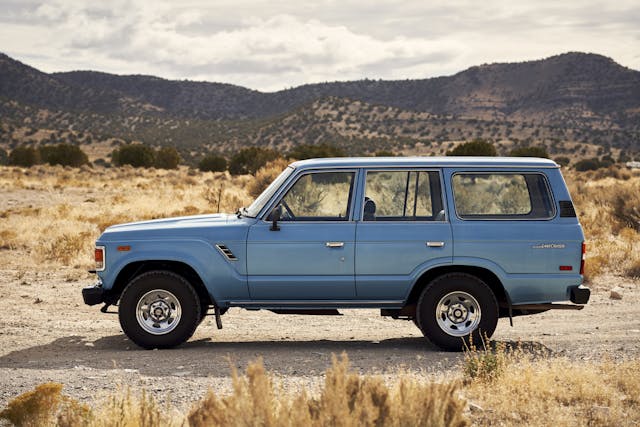
Tied for first are the FJ60 and FJ80 Toyota Land Cruisers, which, if you’re at all familiar with these trucks, is not shocking. These vehicles were designed with one purpose—to last forever in the harshest environments on earth. This is from a company who overbuilds everything to begin with: Over 42 percent of the vehicles in this data set are Toyotas. This isn’t limited to their trucks, either—some of their sports cars have racked up some serious mileage. Recently, this 388K-mile 1993 Toyota Supra Turbo sold for $52K after fees, and this 421K-mile 1991 Toyota MR2 sold above our #4 value at the time. Clearly, bidders weren’t turned off by the astronomical mileage, and maybe they were even bidding because of it. More on that in a moment.
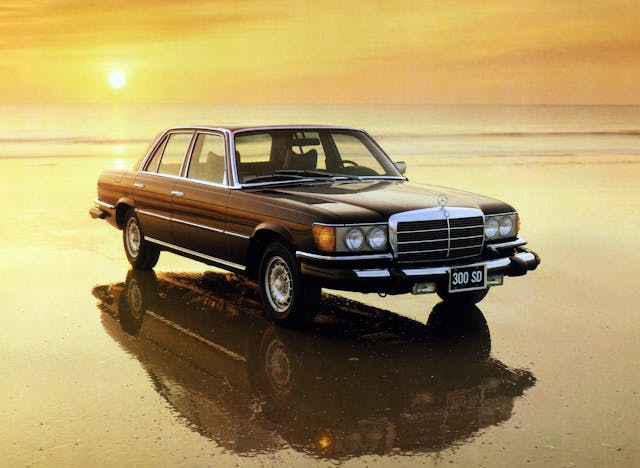
In third place is the Mercedes W123. While offered in a variety of body styles and engines, the only ones we saw make it past our mileage threshold were diesels, mostly 300s and a couple 240s, with eight of the 11 wearing a wagon body. The Mercedes 300TD wagon has a reputation (rightfully so) as one of the longest-lasting cars ever built. In fact, the car with the highest mileage on our list is a 1979 Mercedes 300TD, which was driven 782K miles by the time it sold in 2021. The only issues reported at the time of sale were that the A/C didn’t work and the cruise control would sometimes kick off. That’s it.


Fourth place finds a tie between the 100-series Toyota Land Cruiser and the first-generation Toyota 4Runner (combined with the pickup it was based on). In a few years, it’s likely that the 100-series Land Cruiser will sit at the top of this list—we have seen 51 transactions of vehicles with between 200,000 and 300,000 miles.
High Mileage Means…A Higher Price?
Having identified which cars occupy this rare air, I set out to determine whether there’s a market premium for extreme high mileage. Since mileage usually correlates to the sale price of a vehicle, I plotted price vs. mileage and added a linear line of best fit between the two. If we see “extreme-mileage” vehicles more often sell above this line, then there is likely a premium. For this, we only included sales since 2023 so we won’t have to adjust for a fluctuating market.
Looking at sales of our top three vehicles—the Toyota Land Cruiser FJ60 and FJ80, and the Mercedes W123—the one with the least convincing data is the FJ60. Let’s start there.
There is a clear trend line where price decreases as mileage increases—as expected. Plenty of examples with a lot of miles sold above this trend line, but this 1988 Toyota Land Cruiser FJ62 with 373,358 well-documented miles sold for $26,250—an outlier sale. That was a higher sale price than 43 percent of the FJ60s in the chart with fewer miles. One thing that made this Land Cruiser so desirable was that it had been owned for 35 years by a single family, who took exceptionally good care of it.
This trend becomes much more clear when looking at the next generation of Land Cruiser, the FJ80.
Here, we see two high-mileage outliers above the price vs. mileage line. The first one, a 467K-mile 1997 Land Cruiser sold for $17,295—higher than 40 percent of the FJ80s with lower mileage on this chart. What’s even more surprising is this truck was involved in a collision with another vehicle in 2014, and it doesn’t have the desirable triple-locking differentials. A 519K-mile 1995 Land Cruiser pulled in an even higher price at $18K—just under our #3 condition value.
The smaller data sets in the scatter plots illustrate specific examples, but if we expand the view to look at all FJ80 transactions regardless of time or mileage, and group them into mileage brackets, an interesting trend emerges:
As expected, median sales price falls as the mileage bracket gets higher. But, when mileage surpasses 400K, there is a significant bump in median sales price (+39 percent). You could argue that these auctions sites will be more strict with the overall quality of the vehicle as the mileage moves into this range, which could be contributing to the higher sales prices. But, going back to the scatter plot and comparing vehicle to vehicle, extreme high mileage looks more like a selling point and less like a liability.
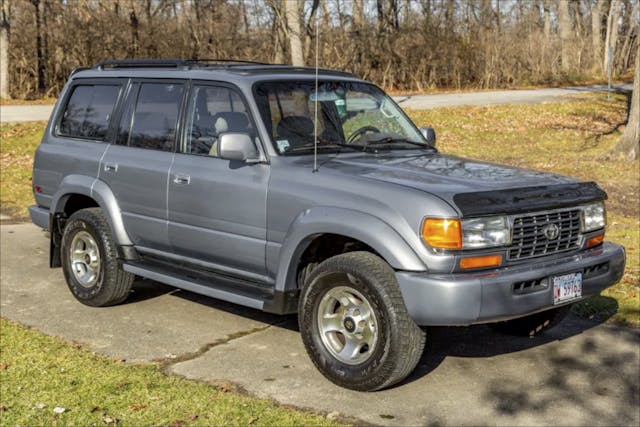
Compare this 519k-mile 1995 Land Cruiser to another 1995 Land Cruiser with “only” 256k miles. Both are the same model year, both have three locking differentials, and both were sold on the same auction site within the same year. While the 256K-mile one has half the mileage of our outlier, it sold for 42 percent less ($10.5K vs. $18K). You could argue the condition is slightly better on the high-mileage example, but not enough to account for such a high premium. Besides, if a collector is concerned with mileage, they would likely have been scared off by 256,000 miles, much less 519,000. The bidders left in auctions like these are not only unafraid of high mileage; they appear to see it as a bragging right. When rarity corresponds to collectibility, there are much fewer 500K-mile Land Cruisers than 200K-mile ones, and bidders seem to be responding.

We saw this same phenomenon in the FJ60. Examples with over 400K miles had a median sale price above ones with between 300K and 400K, but at only a 2 percent premium. However, there was only one sale with mileage above 400K, so I decided to exclude the chart from the story.
The same phenomenon presents itself in our final vehicle—the Mercedes W123. For simplicity, we’ll stick to just the 300TD wagon—the most common W123 in our high-mileage list.
This time, it is actually two sales of the same car only a couple months apart. This 422K-mile 1982 Mercedes 300TD was bid to $12K after fees, but the winning bidder failed to pick up the car. It was then relisted two months later, where it was bid up another $1300 to finally sell for $13,387—higher than half the cars with lower mileage in our data set. This proves that the first sale wasn’t a fluke, and instead may have drawn more attention to this 300TD with such extensive history.
Again, this trend wasn’t just seen in our reduced dataset. When expanding to include all 300TD wagon sales, the median sales price for cars with 400K–500K miles is 16 percent higher than ones with 300K-400K miles and six percent higher than 300TDs with half the mileage at 200K–300K miles.
There is, however, a limit to this madness. While 300TDs with 400K–500K miles sell for a premium, this is not true for vehicles with more than half-a-million miles. To be fair, the two cars with over 500K miles are well over that bar. This 632K-mile 1984 Mercedes 300TD was in pretty rough shape when it sold in 2022. Even so, its $8558 final price was 10 percent over #4 condition value at the time, proving it still sold better than other cars in similar shape. Same story with the 782K-mile 1972 300TD mentioned earlier. While it was in better shape overall, you can’t argue that three-quarters-of-a-million miles might place it as a #4 condition car. However, its $9579 final price was 50 percent over the our #4 condition value at the time.
Long May That Odometer Turn
I might not have found a fellow traveler in the owner of that low-miles Lotus, but when I reached out to Jessica Dickinson, the woman who bought that 782K-mile 1972 Mercedes 300TD Wagon (which she has affectionately named Bella), I discovered someone who shares the idea that the right car can be a long haul companion.
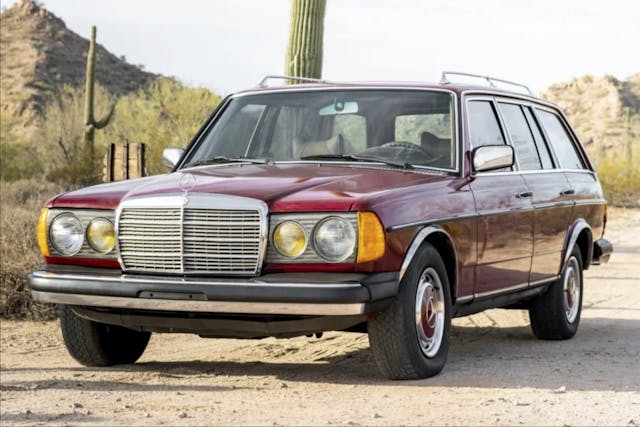
“You see, my family has a bit of a history with rock-solid Mercedes with more miles on them than you can shake a stick at,” she shares in an email. “So when I stumbled upon this absolute treasure of a 300TD on Bringatrailer.com, boasting mileage that would make your head spin, well, I just couldn’t resist.” When she won the auction, she got a one-way ticket from her home in Asheville, North Carolina, to Phoenix to pick up the 300TD.
“Armed with nothing but a cigarette lighter fan and a cooler packed to the brim with ice and beverages, and a tank full of fuel, Bella and I set out on the journey of a lifetime,” says Dickinson. “We cruised down Route 66, cutting through the desert heat like a pair of outlaws on the run, well more of a jog, she is a non-turbo diesel after all. Up I-70 we climbed, into the majestic Rockies, with Bella purring along like a champ. And let’s not forget the endless stretches of corn country, where the only thing sweeter than the scenery was the sound of Bella’s engine humming beneath us.”
The two made it home, and Dickinson shares Bella with friends, encouraging them to make their own memories. The numbers bore out my idea about a niche affinity for high-mileage cars, but at the end of this journey, it was the people who proved the passion.
***
Check out the Hagerty Media homepage so you don’t miss a single story, or better yet, bookmark it. To get our best stories delivered right to your inbox, subscribe to our newsletters.
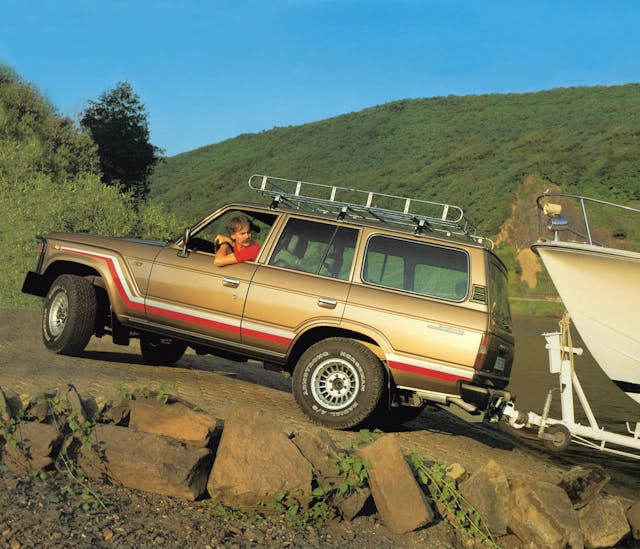


When I see ‘wonderful’ cars being sold with low mileage as a selling point, I always wonder why it’s being sold if it’s so wonderful. By the same token, when I buy a really nice car with high mileage, I am comfortable with the car having been well cared for.
well said
My little 2004 Jeep Grand Cherokee now has 202,000 miles… It is still running great. After reading this article , I’m tempted to see how far the old girl can go..
They don’t want it on trade-in. It it still looks great .
I”ve taken it to Colorado skiing and drove though Iowa cornfields pheasant hunting. My little Jeep has not let me down.
You should talk to Governor Tom Carper of Delaware who had a 2000 dodge grand caravan that In was told had over 850,000 miles on it before it was put to rest.
My 2003 Toyota Tundra Limited TRD 2WD 4.7L V-8 work truck (I’m a handyman) has 313,000 miles on it and counting. I average 20K miles a year. I bought it in 2015 with 109K on it. It was still a pretty good looking truck back then. I wish I could say the same now, but it’s been through a lot since then! I had the timing belt changed at 198K miles. The tech who changed it was at an independent garage but had worked at a Toyota dealership. This is something I would have done myself, but he needed some work done on the shop so we worked a trade out. He told me that as far as he could tell the front of the engine had never been off and it still had the original timing belt on it! It should have been changed at 100K miles. My assumption is the truck was traded in with 109K rather than having the maintenance done. It’s now a little over due for another timing belt. The only engine work that’s been done is a starter and alternator replacement. The starter in the V valley under the intake was a surprise, but I changed it myself, as I’ll do the timing belt this summer. The front end was rebuilt last year (just under 300K miles) due to an alignment tech telling me I had a bad ball joint (which turned out to be soft/worn steering rack bushings). I bought replacement A arms with bushings and ball joints for both sides due to the mileage and rebuilt the front suspension myself. I was a bit annoyed to find the ball joints very easy to move around but still in fairly good condition. The inner bushings were a little worse for wear but still in serviceable condition — would have probably been fine for another 100K. Due to the mileage I’m not upset that I rebuilt the front end when it wasn’t absolutely necessary. I expect to put at least 400K on it.
As far as “when high mileage pays for itself”… I write off about $10K in business mileage on this truck every year. I financed it for three years when I bought it, and it costs me about $5K in gas and maintenance every year. So I get $5K in write-offs just for having a paid for truck. My payments were only $300 a month for the first three years I owned it. Even then the truck paid for itself in write-offs completely.
I have never understood the obsession some people have with keeping their odometers extremely low. A car with 300,000 miles is much more interesting than a car with 2 miles which is just a paperweight.
Interesting. I can’t help but wonder if the number of 300k mile + police Crown Victorias outnumbers all of these other makes put together. I rode in 2 cabs years ago that were P71 Crown Vic’s that had over 400k miles. Absolute tanks that were driven hard.
Though you rarely see them auctioned without the bonus of super low mileage, I know tons of mega mile NA Miatas. I bought a crusty ’93 for literally the change in my pocket- the dealer had offered 100$ in trade. With a new clutch, I drove that car past 300k, then sold it to a friend who, at last count had it over 350k. And that is with an engine that had never been opened. The 1.6 Miata is so understressed that, with proper maintenance will last forever. And you get the joy of something you’d actually WANT to drive. My present NA has a mere 130,000 miles, but, in fairness, it should get extra points for having driven the entire AlCan highway.
I have a 93 Mercury Villager GS as my daily with over 225k on it. I think, odometer stoped working 2 years ago at 181k. I payed $400 for it eight years ago. It’s a Ford/Nissan Hybrid, Ford styling with a Nissan drive train. It has the non-interference SOHV VG30E engine and trans combo(+). I keep the oil and fluids changed, brake line and fuel line patches when needed. Sure it ain’t in the best shape but it’s cheep to maintain transportation. Plus take out the two rear bench seats and you can haul sheets of plywood and close the gate! Try and do that with vans these days. Still the local car shows won’t let me in:( But for an over 30 year old van I still find that most of the time, I drive the oldest vehicle in any parking lot!lol
Hagerty should do an article about, “Do you own the oldest car in the parking lot?” It would be an honer to have Hagerty writers use the idea:) Keep driving safe everyone!:))
Does anyone know of a higher mileage Mercedes-Benz E500 (W124 chassis) than my 1994 with 310,000 miles? It’s been my daily driver for 25 years and I thought I was the only person who takes joy in racking up miles on a classic regardless how it impacts value. Love this article.
I’m surprised there was no mention / comment regarding the XJ jeeps. My 2001 has almost 270k and runs like a top….
Whenever someone approaches my 1962 Sunbeam in a parking lot and asks how many miles it has on it, I laugh. ‘I haven’t the slightest idea!’ They walk off miffed. I drive my cars. To the store, to the gym, on trips with my dog, even once took my E Type camping. Believe me I was the hit of the campground. To me all cars, and especially classics are to be driven. If not, then why have them? Which is all the stranger to see an article like this on a Hagerty website. Mostly seems to me that the classic insurance giant tries to do anything possible to keep people like me from driving my classics in their policies. I get it, but it just rubs me the wrong way.
I’ve had five Land Cruisers. All but one have been paragons (the one bad one was abused and lived in Chicago, so it had rust issues. The dealer who sold it to me was a crook.) I’ve had two 123 Mercedes- still have a 300CD turbo. As far as I’m concerned, the Mercedes 123 and the Series 80 Land Cruiser are the closest thing to a forever car that I’ve ever seen. I have a few collector cars, but my daily drivers are almost always Toyotas.